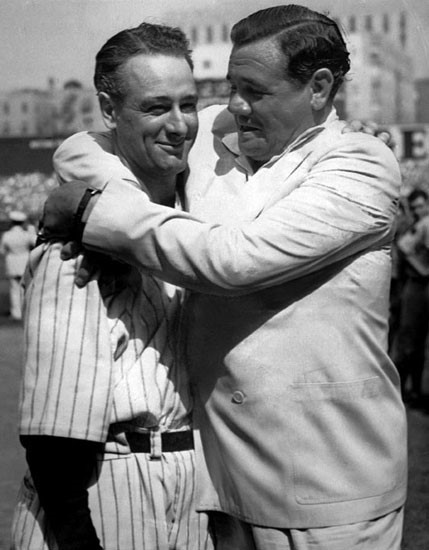Amyotrophic Lateral Sclerosis (ALS), commonly known as Lou Gehrig’s Disease, is a progressive neurodegenerative disease which causes muscle weakness, paralysis, and ultimately respiratory failure.
It was first discovered in 1869 by a French Neurologist named, Jean-Martin Charcot. ALS first came to national attention here in America when beloved Yankee, Lou Gehrig, was diagnosed with this disease in

(Lou Gehrig being embraced by former teammate, Babe Ruth, at Yankee Stadium on "Lou Gehrig Appreciation Day”, July 4th 1939.)
Gehrig’s diagnosis prematurely ended his Hall of Fame baseball career and he passed away on June 2
ALS attacks motor neurons which go from the brain, to the spinal cord, then to muscles throughout the body. Progressive degeneration of these motor neurons leads to their death. These motor neurons are needed to move muscles throughout the body.

(Example of how ALS affects motor neurons)
Early signs and symptoms of ALS include muscle cramps or twitching, weakness in the extremities, difficulty in speaking and swallowing. As the disease worsens, the inability to move parts of the body, inability to communicate with anything other than the eyes,
For unknown reasons, military veterans are two times more likely to be diagnosis with ALS than non-veterans. Scientists have been unable to find the common link between veterans which causes this increased risk of disease. What is known is that this increased risk affects all branches of the military, across all duty stations, and regardless if the veteran served during peace or war. Veterans who served in the Persian Gulf War of 1991 are at twice the risk of diagnosis of ALS with veterans of World War Two, Korea, and Vietnam also being at an increased risk.
There are some theories as to why veterans are diagnosed at a higher rate. Smoking and alcohol consumption are believed to increase the chance of diagnosis, but other factors may increase it as well. Environmental hazards such as lead, pesticides, or other toxins could be the cause. There is also the belief that the extreme physical exertion, which servicemen and women go through, could lead to this disease.
You can make a difference in the fight against ALS. The ALS Ice Bucket Challenge came to prominence on the internet in
